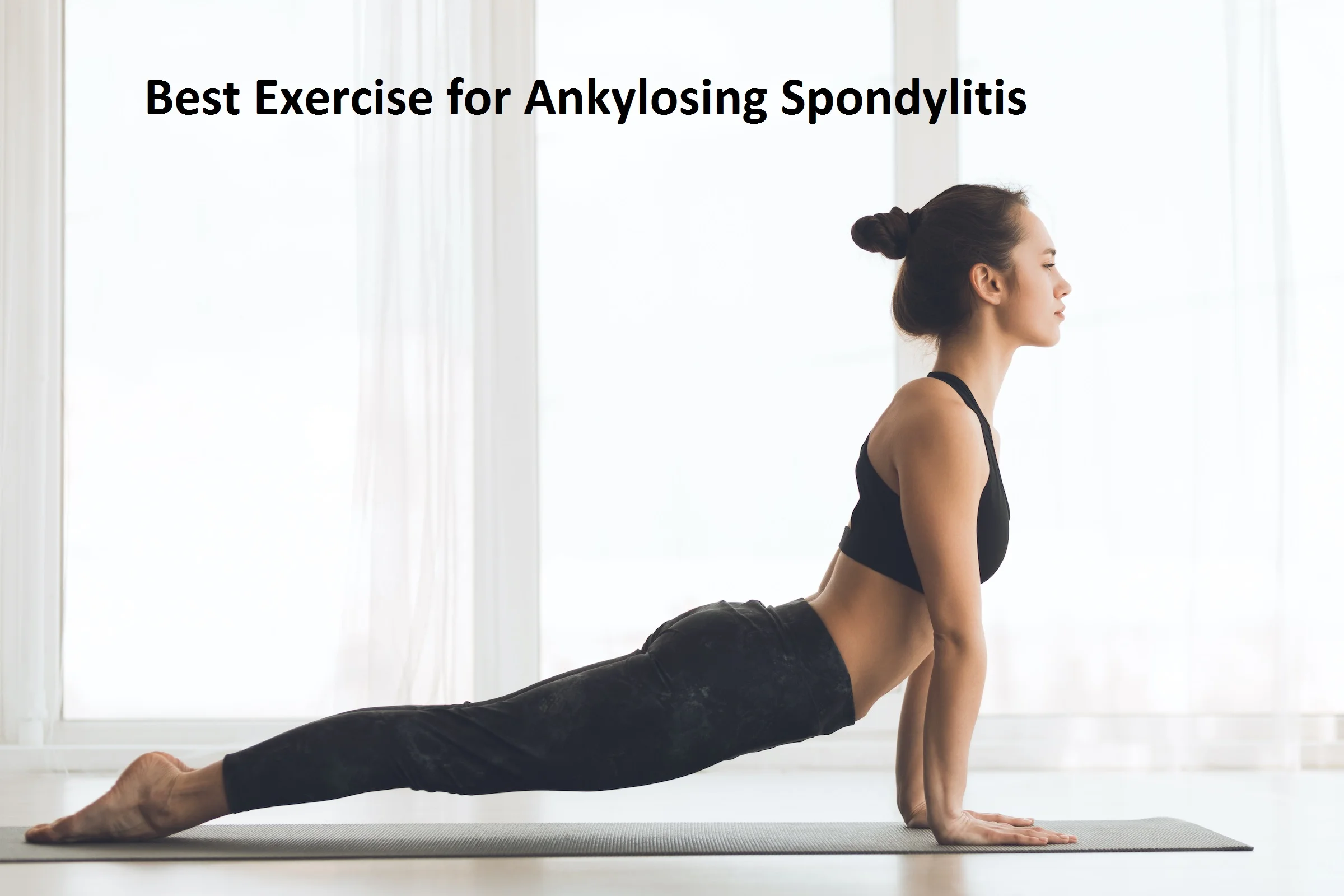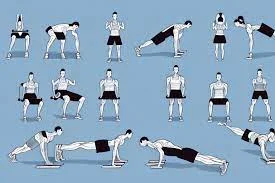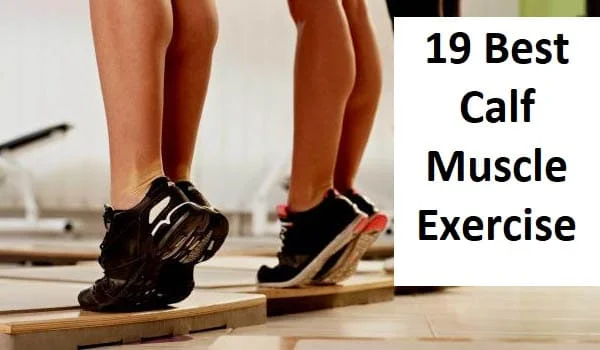Best Exercise for Ankylosing Spondylitis
Ankylosing spondylitis (AS) is a chronic inflammatory disease that primarily affects the spine, leading to pain, stiffness, and reduced mobility. Regular exercise is an essential component of managing AS and can help alleviate symptoms, improve mobility, and enhance overall quality of life.
Exercise plays a crucial role in maintaining joint flexibility, reducing pain and inflammation, and preventing the fusion of spinal vertebrae, which is a hallmark characteristic of AS. A well-rounded exercise program for individuals with AS typically includes a combination of stretching, strengthening, and cardiovascular exercises.
Stretching exercises help to maintain or improve joint flexibility and reduce stiffness in affected areas, such as the spine, hips, and chest. Gentle stretching can also help relieve muscle tension and promote better posture. Common stretching exercises for AS may include neck stretches, chest stretches, and lower back stretches.
Strengthening exercises aim to build and maintain muscle strength to support the spine and improve overall stability. Targeted exercises for AS often focus on the back, core, and leg muscles. Examples of strengthening exercises include low-impact aerobic activities like walking, swimming, and cycling, as well as resistance training using weights or resistance bands.
Cardiovascular exercises, such as walking, swimming, or cycling, help improve cardiovascular health, enhance lung capacity, and promote overall fitness. These exercises also contribute to weight management, which is important for individuals with AS, as excess weight can worsen symptoms and strain the joints.
What is Ankylosing Spondylitis?
Ankylosing spondylitis (AS) is a type of inflammatory arthritis that is painful and developed. It mostly affects the spine, but it can even affect the joints, tendons, ligaments, eyes, and bowel. This condition is unexpected, and it affects people in a variety of forms. Spondylitis help groups say that medicine alone is not sufficient to treat AS. They accept that exercise is an essential part of treatment for the condition and should be a high priority.
Two symptoms that most people with AS feel are stiffness and pain, so remaining fit and flexible helps control the condition. The advantages of following an exercise schedule include developing and keeping a good posture, improving flexibility, and reducing pain.
Importance of Exercise in Ankylosing Spondylitis:
Exercise can be an essential way of reducing the symptoms of AS and holding power and flexibility. The Spine Association of America state that training is an “essential part” of therapy.
It can assist people maintain more mobility and flexibility over the period, and it can assist prevent spinal fusion. Individuals also commonly find that exercise is useful in controlling pain.
- Helps to improve posture
- improving strength, balance, and mobility
- enhancing cardiovascular health
- enhancing breathing capacity
- lowering high blood pressure
- maximizing bone density
- helping weight management
- enhancing a person’s response to medications
Why exercise when you have AS?
Exercise helps to strengthen the paraspinal muscles and the core muscle. Carrying strong paraspinal and core take the stress off the joints of the back, which is extremely important in joint-generated pain syndromes like AS. Conversely, resistance training to build your stabilizing muscles can be just as good as cardio, such as walking and swimming. Cardiovascular activity enhances the dispersion of nutrients to joints and discs, increases blood flow to tissues, and tones and maintains supporting muscles. All of this shows better musculoskeletal health and performance.
When to exercise?
The most comfortable way to fit exercise into a busy life is to do it at the same time regularly. Some people may choose to stretch in the morning to get rid of stiffness by engaging in specific activities. Regardless, later in the day or the evening will do others sufficiently.
Recommended exercises:
The Spondylitis Association of America (SAA) suggest four types of training, saying that an excellent exercise schedule will include them all:
- Stretching: These activities enhance flexibility and decrease muscle stiffness, swelling, and ache. They also reduce the risk of fusion of the joints.
- Cardiovascular: Activities that raise the heart rate for an extended time, such as swimming or walking, enhance lung and heart processes, as well as promote mood. They also relieve pain and fatigue.
- Muscle strengthening: Powerful core and back muscles help sustain the spine, enhancing movement and posture and also relieving pain.
- Balance: Balance practices enhance stability when always moving, and they decrease the chance of falling. They are especially beneficial for people with lower bone density.
Following are the Best Exercise for Ankylosing Spondylitis
Bridge

This practice strengthens the core muscles and glutes.
- To do this exercise lie on your back with both knee bent and feet flat on the ground.
- Now raise your hip off the ground as much as possible.
- Maintain this position for five seconds, then lower down gradually.
Hip and pelvis rotation
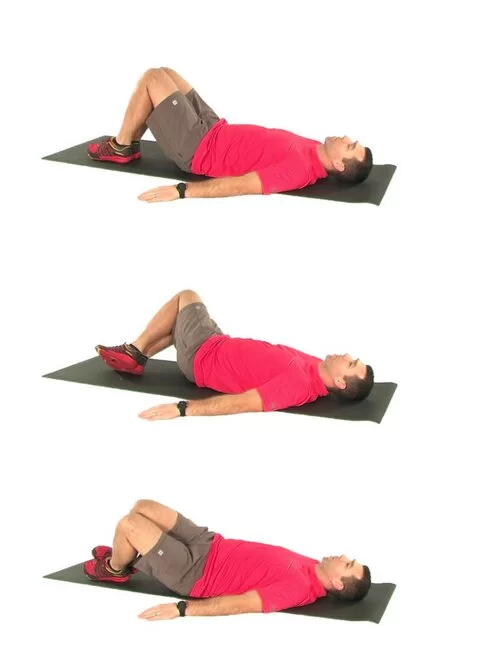
This activity helps stretch out the lower back.
- Take a supine lying position with your hands above your head.
- Flex the knees and roll them gradually to one side.
- Maintain for five seconds and then back to the knees.
- Repeat 10 times on both sides.
Superman

This exercise will assist strengthen the upper and lower back and hips, which will assist with posture. Be alert to avoid twisting the body or overstretching the neck.
- Take a prone lying position.
- Raise the right arm and left leg until they are similar to the ground.
- Stretch and keep for five seconds.
- Lower and do this with the other arm and leg.
- Repeat five times on both sides.
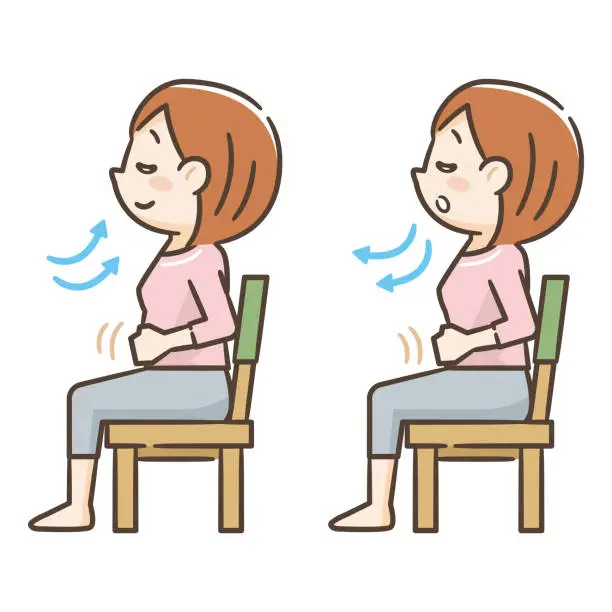
Breathing exercises
The breathing exercise moves the ribs, which assists with breathing.
- Take a semi-inclined position with the knees flexed and the feet flat on the ground.
- Put the hands on the sides of the body, against the ribs.
- Take five full breaths through your nose and five full breaths out of your mouth. Force the ribs out against the hands with per breath.
- Then, put the hands on the upper front chest and take five deep breaths, as early.
Floor hip flexor stretch

- To do this stretch you have to take a kneeling position on the floor.Now, your left leg flexed at the knee, left foot flat on the ground.
- Relax your shoulders against the ground.
- Put your hands on the back of your left thigh and gradually pull your left knee toward your torso.
- Maintaining this position, now flex your right foot while pressing your right thigh and calf down into the ground.
- Feel a stretch in the anterior thigh of your right leg.
- Control for 30 seconds as you concentrate on gently increasing the involved muscles.
- Go back to the initial position and repeat the process with the other leg.

Press Up to Stretch Your Spine
- Ankylosing spondylitis (AS) can compress the spine and muscles in your back. Stretch with this activity to help “rounded” back and backache.
- Lie on your tummy with your legs after you.
- Slowly support yourself up on your elbows so your chest is off the floor. If you are able, straighten your arms.
- Hold for 20 seconds. Repeat 3-4 times. Do this two times a day.
Plank for a Stronger Core
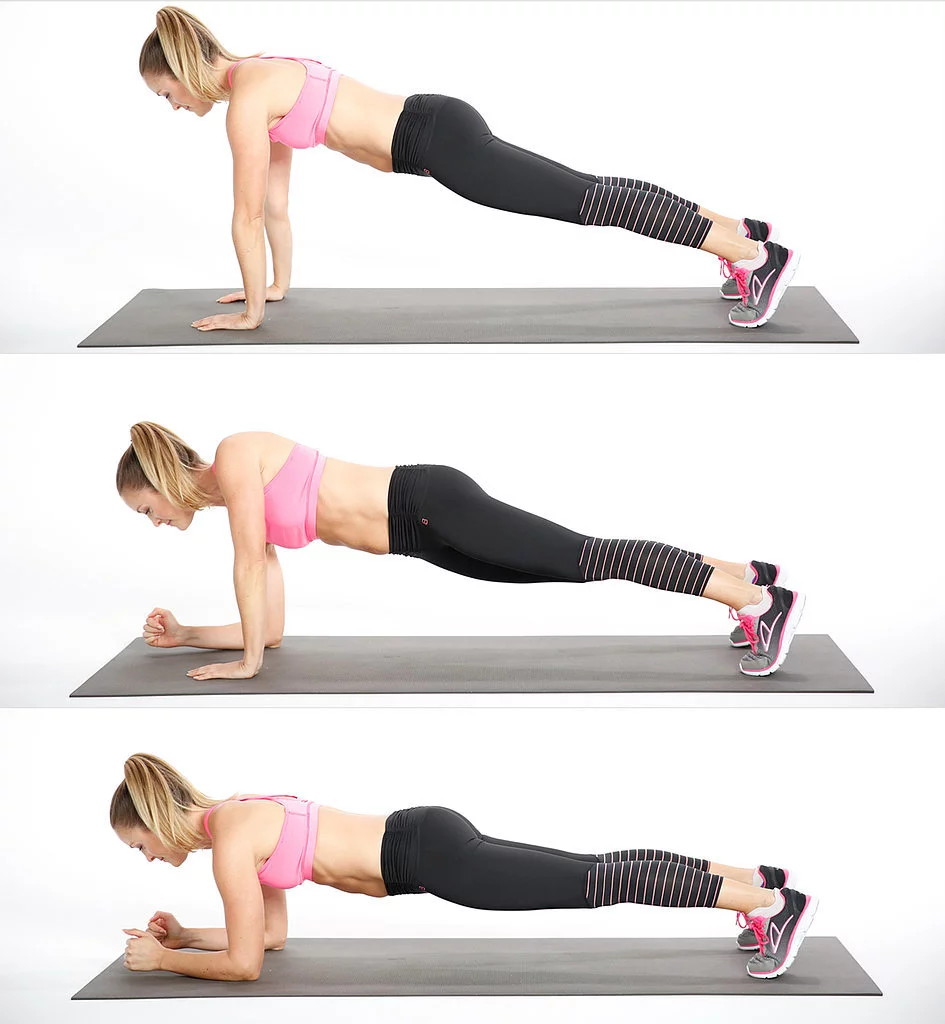
- To make sure you are healthy enough for this activity, begin in a standing position with your feet flat on the base and your forearms on the kitchen counter or a chair.
- Once you can do that smoothly, move on to the difficult version. Your abdomen, back, and butt muscles help your posture. Work them with this movement no crunches are needed.
- Kneel on a mat. Place your forearms on the floor.
- Stand on your toes with your legs straight behind you. constrict your stomach and butt muscles to maintain your body in a straight line. Do not crane your head up or let it swing down.
- Keep your neck and spine in alignment. Hold for ten seconds. Repeat 3-4 times.
- Add more time as you become more powerful. Constantly keep your core tight.
- Do this 3 to 4 times a week.
Do Chin Tucks to Stretch Your Neck

- This disease can make you bend forward. That can force your neck to get tight and give you headaches.
- This exercise can support your neck to keep you upright and relieve tightness.
- Lie down on your back. Without raising your head off the ground, tuck your chin in slightly toward your chest.
- Hold for 10 seconds. Repeat 3 to 6 times.
Corner Stretch to Open Your Chest
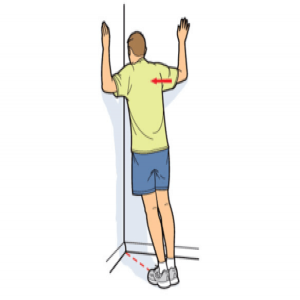
- See a corner and stand facing it. Extend your arms.
- Relax the palms of your hands on the walls. Gently push your chest toward the corner.
- Your arms will supply tension. You will feel the stretch across the anterior of your chest.
- Your shoulder blades will slide towards one another along your back. Hold for 30 seconds.
- Do this stretch regularly.
Roll Your Shoulders to Loosen Up
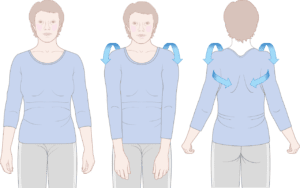
- To start this exercise you have to stand or sit up tall. Hold your spine as straightforwardly as you are comfortably able to. Move your shoulders back and down after gently shrugging them up towards your ears.
- You can sense this in your upper back. Think about drawing your shoulder blades together and down in a rolling movement.
- Then draw your shoulders back up toward your ears. Repeat 10 times. Accomplish this stretch every day.
Standing Leg Raises

- Hold the back of a stool or bar. Hold your back straight with a slight flex in your knees.
- Gradually raise one leg out to the side so it is a few inches off the floor. Then lower it back to the initial position.
- Now, kick the same leg directly behind you to 45 degrees. Recall to keep a good posture.
- Avoid leaning over at the waist. Repeat 15 times on both legs.
- Do this move 4 to 5 times a week.
Cardiovascular

The Spondylitis Association of America suggests achieving aerobic exercise between 3 and 5 times a week, for a total of 75–140 minutes per week.
Cardiovascular exercises may have:
- Swimming
- Walking
- Cycling
- Yoga or tai chi
- One of the best exercises for AS is swimming since it challenges all of the muscles and joints without strange them.
- It is most useful to talk to a healthcare professional before settling on a cardiovascular exercise because some types, such as running, can put extra pressure on the joints.
Other exercises
The Spondylitis Association of America also suggests the following movements for spondyloarthritis.
- Hamstring, quadriceps, and hip flexion exercise
- Back stretches
- Bending side stretches
- Body rotations
- Neck rotations and stretches and many more exercise to do.
Posture Training for ankylosing spondylitis:
Backache from AS can lead individuals to adjust their posture to try to reduce the pain. Over time, posture modifications can show stiffness, weakness, and pain in the muscles and joints. Activities that strengthen the core — pointing the back and abdominal muscles — can reduce back pain and enhance posture.
Individuals can reach and maintain good posture by:
- Exercising regularly
- Adding specific core supporting exercises to their training and doing these 2 to 4 times a week
- Being conscious of and trying to straighten their posture during everyday activities, including seating at a desk, walking, and watching TV
- Stretching posture training exercises
Specific exercises can help with posture when somebody has AS, including the two below.
Posture exercise 1
- Stand against the wall with the back, heels, bottom, and shoulders touching it as much as possible.
- Press, but do not tilt, the head back into the wall.
- Hold for five seconds.
- Repeat ten times.
Posture exercise 2
- Lie on your stomach, looking directly ahead.
- Put the hands by the sides of the body.
- Raise one leg off the floor, holding the knee straightforwardly. Raise the opposing arm out in front of it allows.
Get more information on how to enhance posture and know about other movements for posture.
What to avoid?
Movement is an essential part of the treatment for AS. Regardless, it is necessary to work with a healthcare professional when choosing an exercise program. Some sports, including high-impact exercises like jogging, can induce problems. Communication sports may hurt people with advanced AS because these actions can enhance the risk of joint or spinal injury. Low-impact but competitive sports like volleyball and badminton may be suitable options. Pilates, yoga, and tai chi are also fine choices for people with AS.
Tips for getting started:
Ask a doctor: Anyone thinking about initiating an AS training program should consult a doctor or physical therapist sooner. These professionals can suggest what exercises are suitable and how a person should bring them out. Someone with AS can even get help with developing a personal exercise program.
Warm up first: As with all exercise, it is essential to warm up first. Individuals can begin with stretches to relax the joints and muscles before doing power exercises or cardio. Accomplishing this decreases the risk of injury.
Exercise on a comfortable surface: It is most suitable to perform exercises in a relaxing area, such as on a carpeted floor or exercise mat. Individuals who have problems getting up and down from the bed can exercise on a bed that has a firm mattress.
Build up slowly: When beginning an exercise schedule, people are likely to encounter some discomfort, so it is essential not to overdo it. Beginning slowly and building up smoothly is a better method.
FAQ
Which type of training is good for ankylosing spondylitis?
Pain-free low or no-impact exercises, such as yoga, tai chi, swimming, walking, or cycling are most suitable for people with joint pain.
Is walking good practice for ankylosing spondylitis?
Walking: Walking is a low-impact exercise that can be very useful for people with ankylosing spondylitis. This is the perfect way to ease the body into exercising. Start with a short 5-15 minute walk and slowly increase the duration of your walks to half an hour at a time.
How much recovery time for ankylosing spondylitis?
Depending on the recovery is not the same for everyone it may depend on the affected joints and the severity of the disease. it can take a month to a year for a full recovery.
Which exercises should be avoided with ankylosing spondylitis?
Most persons with spondylolisthesis should stay away from activities like heavy lifting, competitive swimming, diving, gymnastics, football, and other sports that could put additional stress on the lumbar spine.
Which are the most common symptoms of ankylosing spondylitis?
Back pain and stiffness
Arthritis.
Enthesitis.
Fatigue.
Which is the best therapy for spondylosis?
Typically, conservative measures are useful in treating the symptoms associated with spondylosis. Physical therapy and painkillers are non-operative steps. However, surgical intervention may be required to relieve pressure if spondylosis has confined the spinal cord or spinal nerve roots.
What differentiates ankylosing spondylitis from spondylosis?
A category of inflammatory disease known as spondylitis affects the joints in your spine. Spondylosis results from the deterioration of your spine, not from inflammation.
Which joint is most commonly affected in ankylosing spondylitis?
The axial spine is affected by the chronic inflammatory illness known as ankylosing spondylitis (AS). The most typical symptoms of this condition are growing spinal stiffness and chronic back pain. Spine, sacroiliac joints, peripheral joints, fingers, and entheses involvement are traits.

